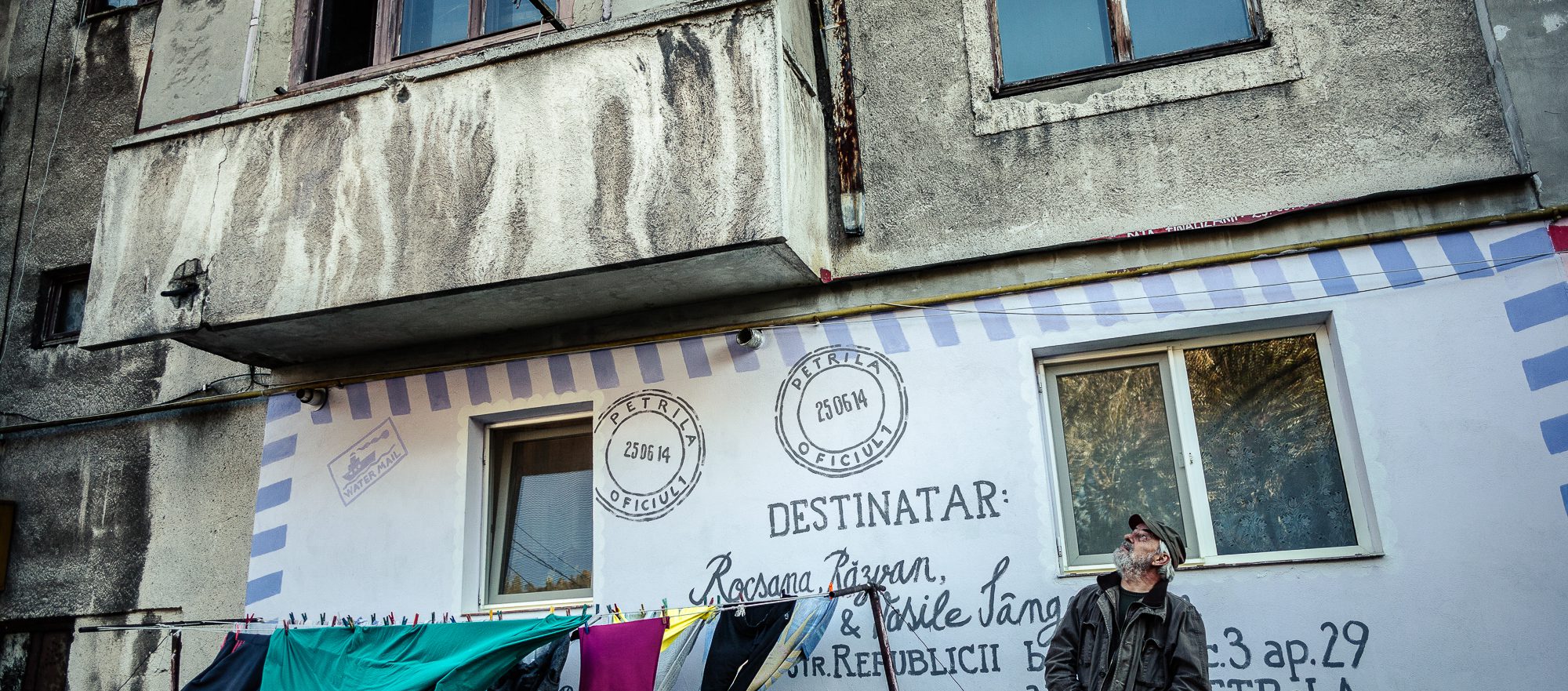
A group of social entrepreneurs are breathing new life into a former mining community in Romania.
It was all grey. Grey hills, grey houses, grey forest. Grey silhouettes walking back and forth between the dark skeletons of the mining structures and the sad, greyish apartment buildings. Even the river here was black – waters saturated with thin coal powder.
And, yet, people in the Jiu Valley in south-western Romania remember the times, before 1989, when the coal mines were working as good. As grey as it was, the valley was very much alive.
More than 100,000 people were working around the clock to support an economy based on coal, and they were rewarded with high wages and praised as heroes by the communist propaganda. At a time when others in the country were suffering from food shortages, the miners had everything they could possibly need. The mines even had their own libraries, clubs and cinemas.
People moving in from other regions were hired as soon as they got off the train, directly at the railway station. More than 4,000 people were employed by just one mine, the oldest in the valley: Petrila. When the mine shut down, in 2015, only 400 were still working in the decaying, half-demolished buildings.
When Romania started to shut down mining in the valley in the 1990s, the area seemed to be dying. Everyone repeated the same mantra: “We are just miners, that’s all we know, this is who we are. Without mining, this valley will die”.
It did not happen.
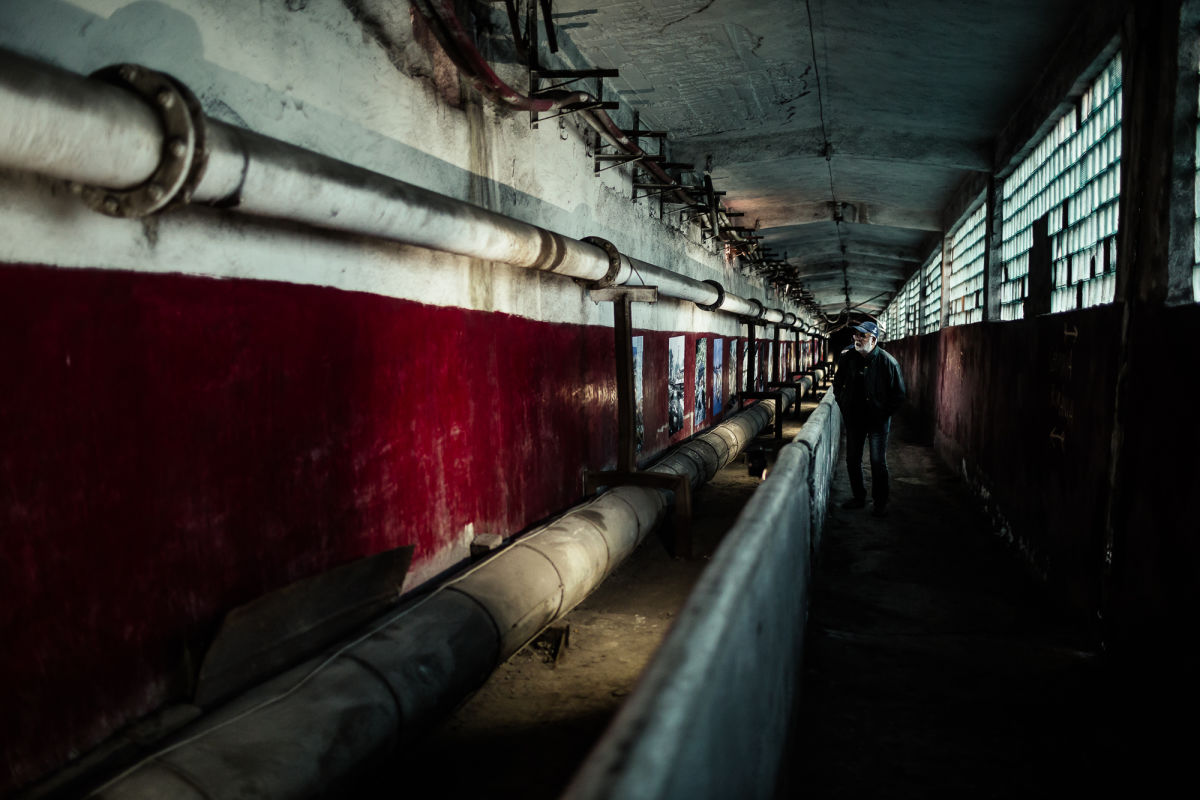
Two decades after most of the mines in Jiu Valley closed, I am visiting the Valley on a golden autumn afternoon. Leaves of the virgin birch forests are colouring the hills in yellow, orange and red. The sun is shining gently, the sky is dark blue. The apartment buildings are freshly painted in warm colors, the water of the river is pristine clear, the streets are crowded with people enjoying the warm day.
Many left the area after the massive layoffs between 1997 and 1999. Most of them went to work in western Europe and started sending money back to their relatives in the valley. Some even returned to start small businesses of their own in the valley – mostly shops and chalets.
This trickle of money and energy offered some hope, but it was not enough. Meanwhile, the government did very little to support alternatives to mining, in spite of numerous promises. The lack of infrastructure and the isolation of the region made the valley unattractive to investors, despite its abundance of highly skilled workers.
However, a curse might turn into a blessing. Surrounded by hills and virgin forests, and with a few small but ambitious ski resorts in the nearby mountains, the valley has more and more started to place its bets on tourism. It has to face one big challenge though: it is remote from all densely populated areas in the country and the region hasn’t been seen to be sufficiently alluring to entice people to make the effort to come here.
That was until a group of determined locals started to challenge the perception that the place has nothing extraordinary to offer.
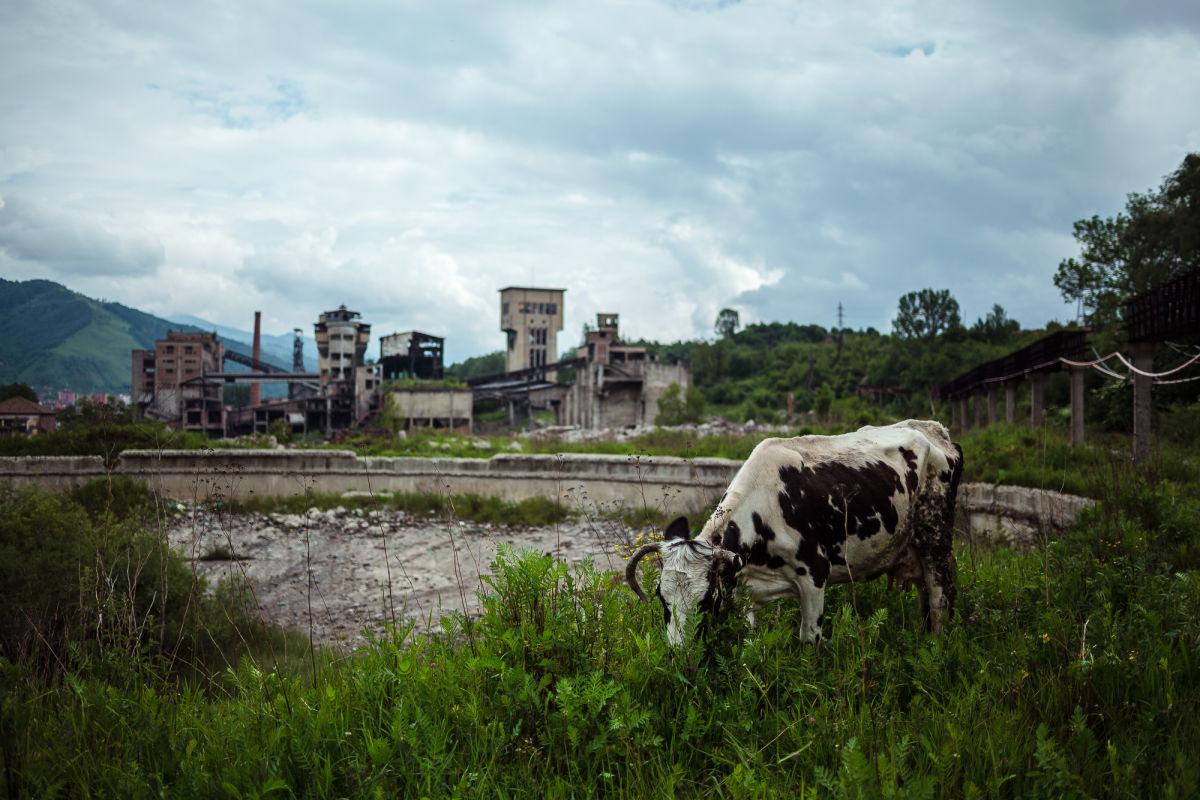
‘The European Periphery of Culture’
Ion Barbu was born and lives in Petrila. Now in his 60s, he is an acclaimed, prolific and internationally awarded artist who combines drawing, painting and graphic writing to produce a variety of work, from installations to murals and urban art. In the early 2000s, as he became aware of the demise of the mining industry, he thought of a way to infuse his community with new life: by using his best weapon, art.
“This town was a cultural desert,” Ion Barbu told me during an interview when I visited Petrila in autumn 2018. “So I said to myself: let’s create a few islands in this desert. If we want to see a play or hear some music, why not bring them here instead of us going to the city?”
At the beginning, almost everyone saw Barbu as either a crazy eccentric or a dangerous cultural anarchist.
In 2006, as the Romanian city Sibiu was preparing to become the European Capital of Culture, Barbu launched a series of cultural events in Petrila under the brand ‘the European Periphery of Culture’. He organised in Petrila a now annual arts and music festival called ‘Bad Man’, a pun on the name of a well-known national folk festival ‘Good Man’.
Together with a few volunteers, he restored the memorial house of I.D. Sarbu, an important Romanian writer born in Petrila who had been imprisoned during the communist regime. The house had been rapidly and severely degrading: it was classified as a monument so no private individuals could restore it, but the Ministry of Culture took no steps to safeguard it either. Ion Barbu eventually found a backdoor out of the deadlock.
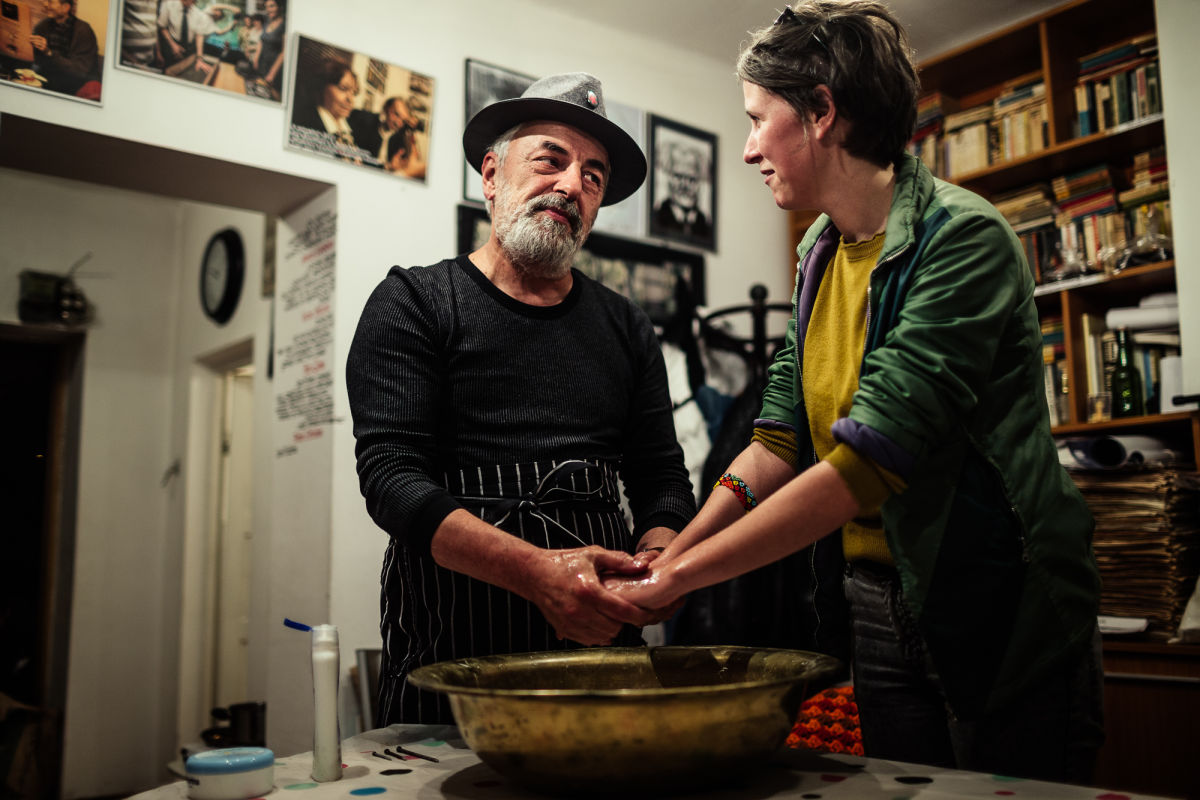
“The house had been already rebuilt in the past, so it had kept its original shape but not the original materials. We convinced the legal heir of I.D. Sarbu to declare that this was not really the late writer’s house, but just a copy, therefore not really qualifying as a monument,” explains Barbu.
The artist and his team could thus restore the building. The next step was to make sure this was not going to be the next memorial house hopelessly waiting for people to enter. Barbu painted the exterior walls in vivid colours and added some selected quotes from the writer’s works. Instead of waiting passively (and in vain) to be embraced by the community, the art was now shouting to people to come in.
Many other urban artworks would follow, often shocking the community. Barbu transformed a pedestrian crossing on the main street in Petrila into a piano keyboard. He painted the grey facade of an apartment building as a pink, giant postal envelope – a reference to the exodus of Romanians to western Europe (around 4 million Romanians now live abroad). Gradually, more artists and volunteers began to share Barbu’s vision and help him. The local administration was already exasperated, and this was only the beginning.
In 2008, two explosions occurred one after the other one kilometre underground in the Petrila mine, killing 14 people. Rumours about an imminent closure spread quickly. The mine was subsequently transferred to the National Society for Mine Closures (SNIMVJ) which would handle its permanent shutdown.
The closure plan was chilling: every building and headframe would be taken down, every piece of metal and hoist mechanism was to be recycled as scrap metal. This would be not only erasing a place but erasing a history.
The first coal mine in the valley had opened in Petrila in 1858. Its entrance is still visible today next to the building of the mechanical atelier, itself erected 100 years ago. One of the mine’s hoists, made in Germany, is still in service and has been perfectly functional since 1942. The imposing metal headframe, rising tens of metres above the ground, dates from the same year. For Ion Barbu, erasing this history was unacceptable: this mine plant was the one thing that no other town in the country had. Facing authorities who did not recognise the potential of reconverting mining heritage into cultural landscape, Barbu braced himself for a decisive battle to save the plant: without it, the community would be left with nothing.
World-class biking trails
The Straja ski resort is located 30 kilometres from Petrila. Straja is at once modest and ambitious in its chaotic and aggressive development. Buildings are almost overlapping and there are very few parking spaces, but important investments in ski infrastructure have been made: 12 slopes, cable installations, artificial lighting and artificial snow – all with support from the local authorities. Romania has very few ski resorts with respect to its needs, so new ones stand a good chance of becoming popular.
Nevertheless, in recent years, the development of the zone faced an unexpected threat: global warming. The mountains in the area peak at around 1,868 metres, not too high, so there is no snow except during the winter. With winters quickly becoming warmer, the ski season is shortening, putting pressure on the area’s fragile new businesses.
As skiing’s future in the valley has increasingly been put in doubt, it has taken a surprise gift to generate new ideas for the region. Dana Bates is a Texas-born American who has been living in Romania since 1989, and now heads an NGO engaged in youth community projects. A few years ago, he received a present he did not expect: a mountain bike.
Bates loved the present and started to use the bike to explore the surroundings of his adoptive ex-mining town, Lupeni. Biking around the birch-covered hills around Lupeni, Bates realised that the area was perfect for professional bike trails – and that they could attract bikers from around Europe for most of the year.
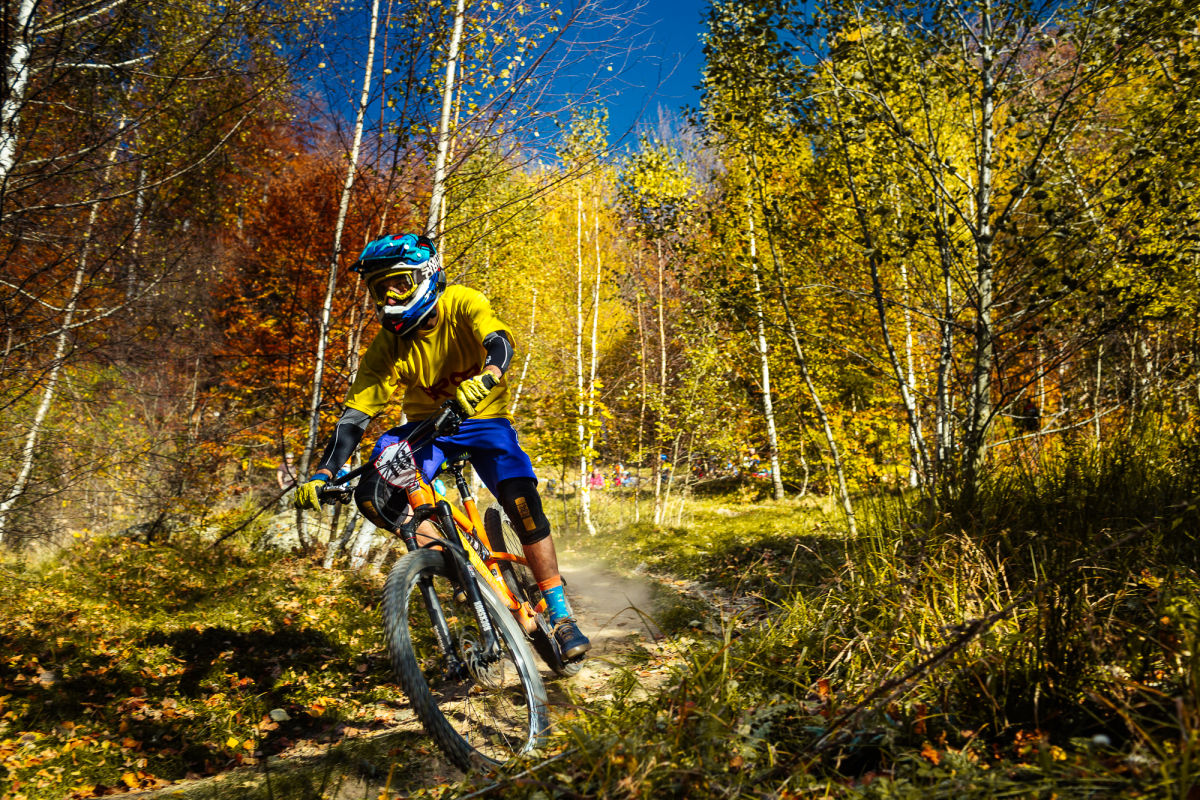
“In Spain, an area called Zona Zero, with less infrastructure than Straja and similarly far from any airport, has been able to become a world-class destination,” explains Bates. “This encouraged me to bring over some experts to check the potential of this area”.
The experts confirmed his intuition. Following their advice, Dana got support from the International Mountain Biking Association (IMBA) to train in Italy and became one of the first IMBA members in Romania. Importantly, he learned how to build world-class trails. On finishing his training, he rented a small excavator and got to work.
Even the authorities were moderately optimistic about it: Bates received some money from the town hall to build his first trail. With the support of a local lobbyist, he could negotiate a good relationship with Romsilva, the national agency responsible for the forests, which allowed him to build the trail. Opposition, though, came from environmental NGOs which accused him of destroying the forest.
“Our longest trail, Baloo, is around four kilometres,” Bates says. “We used a small excavator because we needed to build a ‘flow trail’, with rose borders in curves to increase the speed. And for this trail we have only chopped down one big tree and a few other baby trees. Cyclists are coming not only for the trails but also for the nature, so I am equally interested in having it protected,” he says.
In addition to the world-class trails and the beautiful wild nature, there is one more thing which can attract cyclists from all around Europe. “In Austria or Germany, a full day of cycling costs around 150 euros,” says Bates, “but here we can make it happen for 65-75 euros.” He subsequently managed to raise 50,000 euros from donors to complete five trails, each around four kilometres long, and has started to promote the Lupeni trails to the largest European platform for adventure tourism and also has a dedicated website.
Bates wishes young people would embrace his vision. He envisages that schools could adopt trails to clean and maintain, and that young people could themselves ride on the trails.
Yet the community in Lupeni is still sceptical, says Bates. “I think it’s a sort of cultural pessimism.”
The first real test of Bates’ vision was organising an international mountain bike competition right here in Lupeni in October 2018. The event was a success. The US Ambassador to Romania, Hans Klemm, was in the audience.
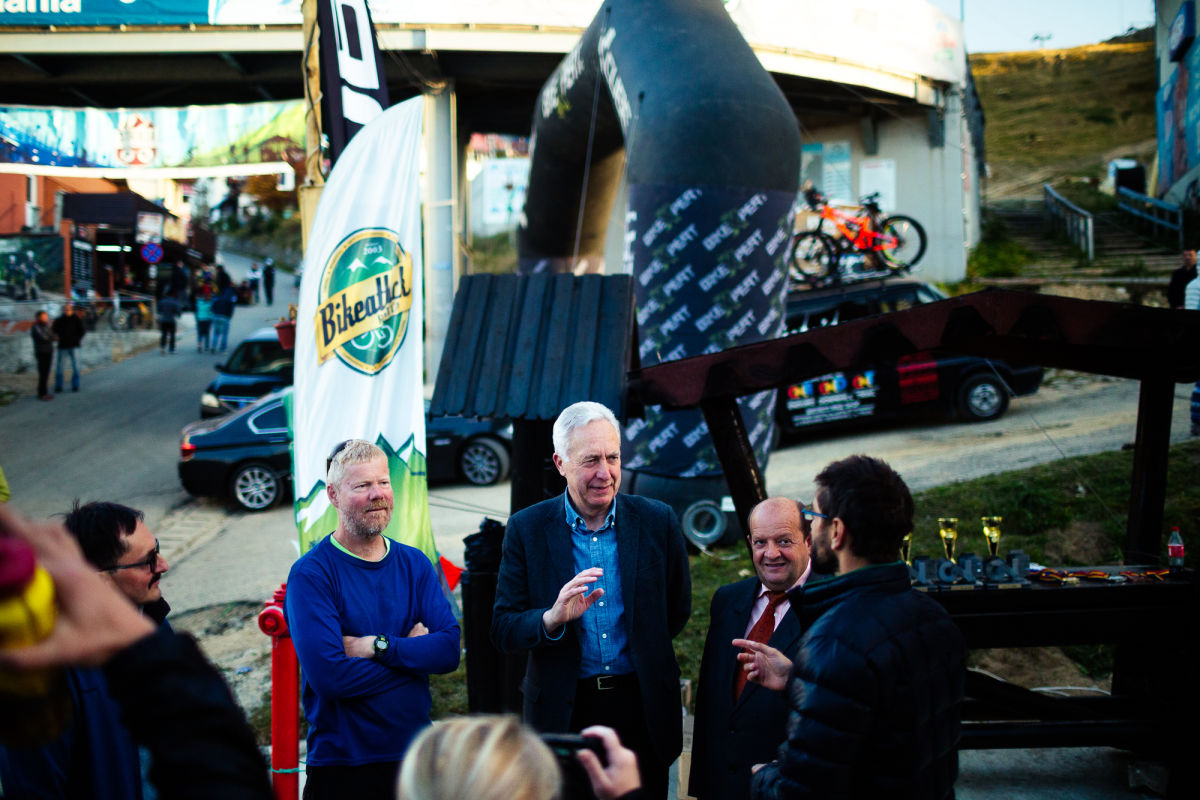
“How did you find the competition?” I ask one of the bikers as they finish the last trail of the competition in Straja. “Kick ass,” he says. “I’ll surely return here.”
A new beginning for the Jiu Valley
In October 2015, the National Society for Mine Closures (SNIMVJ) achieved one of its most important goals: it closed the Petrila mine. The company then got ready to demolish all the mine infrastructure, so Ion Barbu, the artist, knew he had very little time left.
Luckily, he was not alone in his newest venture.
“A few architects from Bucharest and Cluj must have liked us somehow,” he jokes, “and found in Petrila a cause worthy of their efforts.”
The architects took upon themselves the important and difficult task of preparing the detailed technical documentation which served as the basis for lobby work at the Ministry of Energy, the owner of SNIMVJ. In 2016, as Barbu and the others were fighting to save the mine, a popular technocratic government agreed to declare the Petrila mine a national monument.
While SNIMVJ could no longer demolish the mine plant, anti-corruption laws prevented the institution from donating the infrastructure to local authorities. Whoever wanted to take care of the mine would have to buy it at the market price.
Initially evaluated at three million euros by the Ministry of Energy, the mine’s value was finally estimated to be 200,000 euros by an independent evaluator commissioned by Barbu and his colleagues. Even this was too much money for an artist and his friends, so the team tried to persuade the Petrila municipality to buy the infrastructure. Their cultural guerilla war was depicted in a 2015 documentary by Andrei Dascalescu called ‘Planeta Petrila’, and the case received national attention. It’s then when Barbu and his colleagues formally founded their NGO which they named after the title of the documentary.
Barbu and his colleagues not only had to lobby the authorities but also had other more mundane tasks: the site needed to be guarded against scrap iron thieves who had started to dismantle the abandoned site. The defence of the site, too, was achieved through culture.
Barbu painted the former pumping station of the mine with colourful graffiti, labelling it ‘Pumpadou Center’, and hosted concerts and theatre events. The NGO organised workshops with architecture students. They included the site in the national catalogue of the ‘Museum Night’ event, attracting around 2,700 visitors – more than the biggest museums in the nearby city, Deva. They eventually teamed up with former union leader Catalin Cenusa, now retired, to organise the events and to guard the site.
After a long battle, which started with Ion Barbu’s first provoking artworks, the town hall officials are finally starting to share his vision.
“Now we just need them to officially request our help to raise the money to buy the plant, and we’ll put all our efforts into that,” says Barbu, his inspiration burning bright and determinedly.
“We can open a ‘mine cuisine’ restaurant. Or advertise ‘dark coal’ tourism in the area.” He talks about residencies and ateliers for artists, interactive workshops to help preserve the site, museums in the existing rehabilitated buildings, attracting investors who can create accommodation, creating jobs and developing the economy…
As he speaks to me, I look outside the window, onto a perfect autumn day. I can see the leaves colouring the hills while the sun is shining gently in the dark blue sky. Somewhere out there, buried deep in the virgin birch forest, there are also Dana Bates’ bike trails.
And I can only think of Bates’ words earlier in the day, quoting Aristotle: “a beginning is more than half of the whole”.
Text and photos by Adrian Catu
